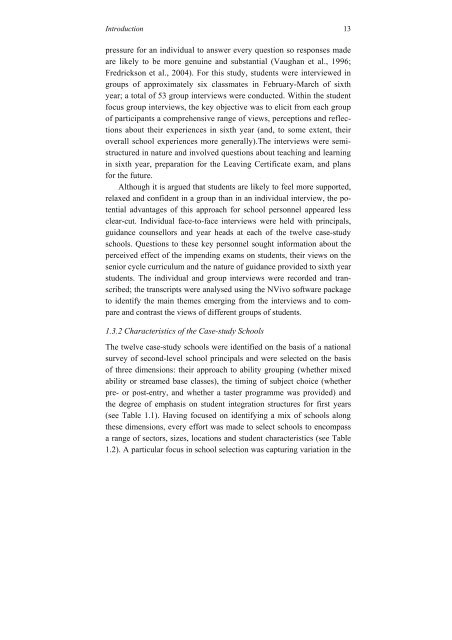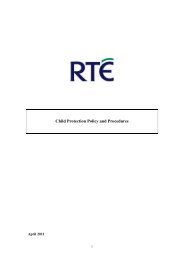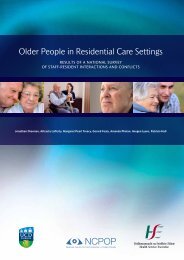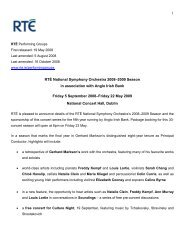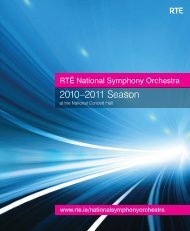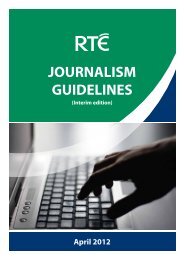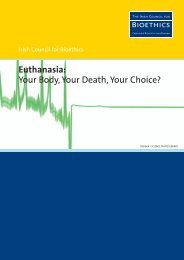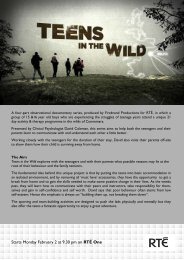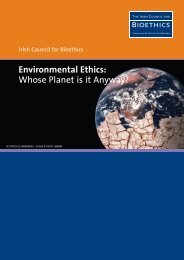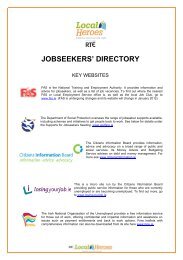From Leaving CertiFiCate to Leaving SChooL a Longitudinal Study ...
From Leaving CertiFiCate to Leaving SChooL a Longitudinal Study ...
From Leaving CertiFiCate to Leaving SChooL a Longitudinal Study ...
Create successful ePaper yourself
Turn your PDF publications into a flip-book with our unique Google optimized e-Paper software.
Introduction 13<br />
pressure for an individual <strong>to</strong> answer every question so responses made<br />
are likely <strong>to</strong> be more genuine and substantial (Vaughan et al., 1996;<br />
Fredrickson et al., 2004). For this study, students were interviewed in<br />
groups of approximately six classmates in February-March of sixth<br />
year; a <strong>to</strong>tal of 53 group interviews were conducted. Within the student<br />
focus group interviews, the key objective was <strong>to</strong> elicit from each group<br />
of participants a comprehensive range of views, perceptions and reflections<br />
about their experiences in sixth year (and, <strong>to</strong> some extent, their<br />
overall school experiences more generally).The interviews were semistructured<br />
in nature and involved questions about teaching and learning<br />
in sixth year, preparation for the <strong>Leaving</strong> Certificate exam, and plans<br />
for the future.<br />
Although it is argued that students are likely <strong>to</strong> feel more supported,<br />
relaxed and confident in a group than in an individual interview, the potential<br />
advantages of this approach for school personnel appeared less<br />
clear-cut. Individual face-<strong>to</strong>-face interviews were held with principals,<br />
guidance counsellors and year heads at each of the twelve case-study<br />
schools. Questions <strong>to</strong> these key personnel sought information about the<br />
perceived effect of the impending exams on students, their views on the<br />
senior cycle curriculum and the nature of guidance provided <strong>to</strong> sixth year<br />
students. The individual and group interviews were recorded and transcribed;<br />
the transcripts were analysed using the NVivo software package<br />
<strong>to</strong> identify the main themes emerging from the interviews and <strong>to</strong> compare<br />
and contrast the views of different groups of students.<br />
1.3.2 Characteristics of the Case-study Schools<br />
The twelve case-study schools were identified on the basis of a national<br />
survey of second-level school principals and were selected on the basis<br />
of three dimensions: their approach <strong>to</strong> ability grouping (whether mixed<br />
ability or streamed base classes), the timing of subject choice (whether<br />
pre- or post-entry, and whether a taster programme was provided) and<br />
the degree of emphasis on student integration structures for first years<br />
(see Table 1.1). Having focused on identifying a mix of schools along<br />
these dimensions, every effort was made <strong>to</strong> select schools <strong>to</strong> encompass<br />
a range of sec<strong>to</strong>rs, sizes, locations and student characteristics (see Table<br />
1.2). A particular focus in school selection was capturing variation in the


